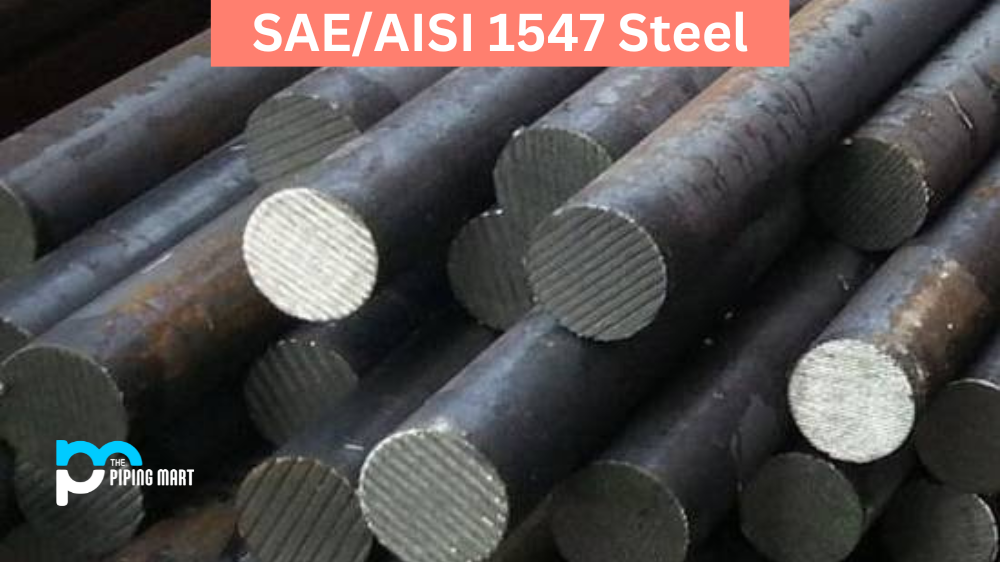Tool steel is a particular type designed for use in tools and machines. It is hard, challenging, and resistant to wear, making it ideal for cutting and machining operations. One type of tool steel, H19, has gained popularity due to its many beneficial properties such as corrosion and heat resistance. Let’s take a look at what makes Tool Steel H19 so unique.
Tool Steel H19 Composition
H19 Tool Steel (UNS T20819) also called Chromium Hot-Work Steels is composed primarily of chromium (Cr), manganese (Mn), silicon (Si) and molybdenum (Mo). These elements give Tool Steel H19 several beneficial properties, such as good wear resistance, excellent machinability, high strength and hardness, and good corrosion resistance. In addition to these elements, Tool Steel H19 also contains trace amounts of sulfur (S), phosphorus (P) and nickel (Ni). The exact composition of Tool Steel H19 can vary depending on the manufacturer.
| Element | Content (%) |
|---|---|
| C | 0.32-0.45 |
| Mn | 0.20-0.50 |
| Si | 0.20-0.50 |
| Cr | 4.00-4.75 |
| Ni | 0.3 |
| Cu | 0.25 |
| P | 0.03 |
| S | 0.03 |
| W | 3.75-4.50 |
| Mo | 0.30-0.55 |
| V | 1.75-2.20 |
| Co | 4.00-4.50 |
Tool Steel H19 Mechanical Properties
Its composition determines the mechanical properties of Steel H19. According to the American Society for Testing and Materials (ASTM), the tensile strength of Tool Steel H19 ranges from 1250 MPa to 1650 MPa. The yield strength ranges from 1000 MPa to 1400 MPa, while the elongation at break ranges from 10% to 15%. Furthermore, the hardness of Tool Steel H19 can range from 38 HRC to 43 HRC depending on the heat treatment process used on it.
| Properties | Metric | Imperial |
|---|---|---|
| Hardness, Rockwell C (air cooled from 1204°C; 704°C temper temperature) | 41 | 41 |
| Hardness, Rockwell C (air cooled from 1204°C; 482°C temper temperature) | 57 | 57 |
| Hardness, Rockwell C (air cooled from 1204°C; 530°C temper temperature) | 58 | 58 |
| Machinability (1% carbon steel) | 55.0 – 60.0% | 55.0 – 60.0% |
Tool Steel H19 Physical Properties
The physical properties of alloy H19 make it an ideal choice for many applications. For example, it has a density of 7.75 g/cm3, which makes it light enough to be easily handled yet strong enough to resist wear during cutting operations due to its high hardness values. In addition, it has a melting point range between 1390°C and 1420°C, which gives it excellent heat-resistance qualities compared to other tools of steel.
| Properties | Conditions | ||
|---|---|---|---|
| T (°C) | Treatment | ||
| Density | 7.98 ×1000 kg/m3 | 25 | – |
Tool Steel H19 Equivalent
- ASTM A681
- FED QQ-T-570
- UNS T20819
Tool Steel H19 Uses
Due to its mechanical and physical properties, grade H19 is suitable for many different applications, including cutting tools and machine parts in automotive industries as well as knives in both industrial and kitchen settings.
Corrosion Resistance
Its high corrosion resistance makes it ideal for use in environments where exposure to corrosive chemicals is common such as chemical processing plants or oil refineries.
Heat Resistance
its heat-resistant qualities make it suitable for applications requiring welding or soldering, such as automotive repairs or electrical work.
Machining
Machining tool steel H19 can provide several advantages to the world of production. The ability to manipulate this material efficiently is highly valued due to the strength benefits that it can confer. This steel tool offers high wear resistance, making it perfect for those needing especially durable components. Its low cost per volume makes working with it more attractive for many users. It also enjoys reasonable machinability compared to other hardened nickel-chromium steels, making it an excellent choice whether you need robustness or affordability over raw power. Working with H19 tool steel could become crucial in many industries and applications, so don’t miss out on its benefits today!
Welding
Tool Steel H19 welding is an important procedure for anyone looking to add strength, durability and longevity to their tool steel products. This type of welding works by combining two distinct materials that have been heated and pressed together until they fuse, creating a solid joint between them. While this type of welding is more complex than other methods, it’s well worth the effort for any severe builder looking to maximize the quality of their craftsmanship. The only downside can be finding a reliable supplier who knows and understands the process, as many shops cannot provide this service. If you want to ensure your projects last and stay strong throughout their lifetime, tool steel H19 welding should be part of your fabrication plan.
Conclusion
In summary, there are many reasons why tool steel h 19 is an excellent choice for a wide variety of applications where durability and corrosion resistance are key factors. Its combination of mechanical properties such as high strength and hardness with physical characteristics like low density makes it an ideal material for many different uses ranging from cutting tools in automotive industries to industrial knife production or kitchenware manufacturing processes! Thanks to its advantageous features like heat resistance and welding capabilities—tool steel h 19 can provide users with reliable results time after time!

Pipingmart is a B2B portal that specializes in metal, industrial and piping items. Additionally, we share the latest information and information about materials, products and various types of grades to assist businesses that are involved in this business.




